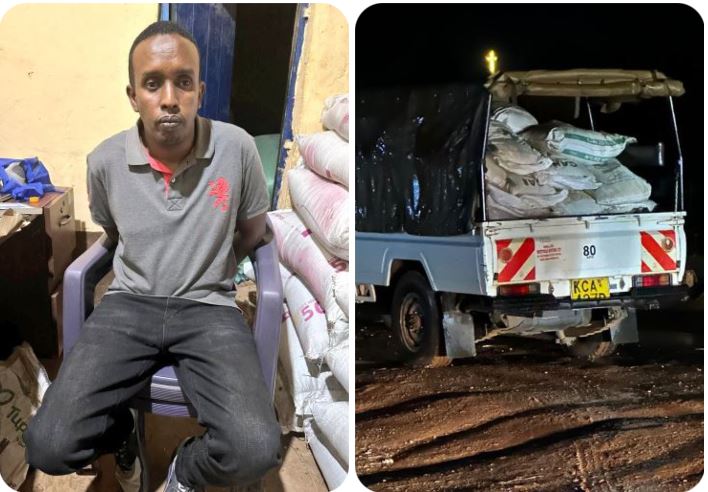Organizations are reexamining how they recruit, develop, and retain talent. They have to, because the pandemic has accelerated three already existing trends among employees: the search for meaning; the desire for flexibility; and the pace of technological transformation. Employees increasingly are bringing a new set of values, needs, and desires to the workplace, and the worker-employer contract is changing as a result, fundamentally and permanently. In this new environment, companies need to make six changes to succeed if they want to attract and retain talent. This article describes what those changes are and suggests how best to make them.
From pedigree to potential.
Job descriptions typically list specific education and experience requirements. That can dissuade candidates from applying who can do the job but may lack a certain credential. To broaden their search, companies can shift the focus from degrees to skills — not lowering entry barriers but changing them. For example, rather than assuming a management job needs an advanced degree, a certain number of years of experience, or an understanding of specific terms or concepts, companies can test for relevant qualities. At McKinsey we have broadened our campus-based sources of great talent from about 700 core schools in 2020 to about 1,400 today, and we plan to expand to more than 5,000 within the next few years. We now use game-based assessments to allow candidates to demonstrate critical-thinking skills; this levels the playing field for those without prior business experience or case-study preparation support.Given tight labor markets, a number of employers are moving in this direction. The official policy of the U.S. government, for one, is “to limit the use of educational requirements” in federal contracts, and in 2021 the government called on agencies “to increase the use of skills and competency-based hiring for employment.” In order to expand its recruiting reach, Okta, which provides secure business applications, no longer requires college degrees for certain sales positions and has created a successful program that trains these recruits.
From preset career paths to self-authorship.
Research shows that people want the ability to personalize their jobs in a way that supports flexibility and well-being. Moreover, rather than following a pre-determined career track up a corporate ladder, they want to create their own career paths. Given the rapidly changing nature of work, and how quickly skills can become obsolete, employees have to take charge of their own professional development.Among those who left and then returned to work during the pandemic, most took jobs in a new sector. This was particularly easy for those with in-demand skills that are not industry-specific, such as data scientists and blockchain engineers. The implication is clear: Companies cannot simply fill empty slots with workers like the ones they are replacing.According to recent survey, almost a third of the employees who left their jobs did so to start a business, evidently in the belief that they could do better on their own. Employers can turn this narrative on its head by providing more development, apprenticeship, and personal opportunities than people can do by themselves. Companies can do so in novel ways, by allowing people to select their own teams, for example, or to apprentice outside the company for some time before returning back.Self-directed learning can support both individual ambitions and company priorities. In some cases, this can even be done at the exact moment of need. McKinsey’s interactive LearnNow allows people to choose the skills they want to learn, ranging from public speaking to data visualization to financial accounting, on their own time, using both proprietary and external sources, such as Coursera and Cloud Academy.Self-directed learning can also promote long-term skill development is through “badging” — public recognition of a particular skill set. A badge establishes trust, assuring would-be apprentices of the teacher’s expertise, while also motivating people to keep learning. IBM began its digital badge program in 2015 and since then has reported substantially more learning and more engagement. To make such an effort attractive, there needs to be real value behind the badge, such as external recognition or internal rewards.Finally, it can be helpful to compile such credentials into an easily updated and accessible learning record, which can help employees keep track and makes it easier for other parts of the organization to find people with the skills they are looking for.
From one-way to two-way, real-time apprenticeship.
Traditional apprenticeship was about a younger person learning a craft from an older one. Today, learning and teaching have to flow both ways, as they might in an apprenticeship that brings together a senior finance manager and a lower-ranking AI specialist. The U.S.-based consumer-goods multinational P&G is an example of how this idea has been institutionalized. Its “reverse-mentoring” program pairs up colleagues at different rungs on the career ladder to learn from and teach each other. The younger partner might offer instruction on digital tools; the more senior one the fundamentals of marketing or manufacturing.A two-way learning dynamic gives workers opportunity for continual growth and can lead to greater loyalty and productivity. According to recent research by the McKinsey Global Institute, companies that are known as great learning organizations do better at attracting talent.
From traditional working norms to teamwork as a science.
Digital tools, advanced analytics techniques, and artificial intelligence (AI) have changed how work is done. Hybrid technologies bring together global capabilities with a few clicks and calls. At McKinsey, our designers work closely with data scientists, industry experts, implementation coaches, MBAs, and client teams, wherever they are. Agile working methods allow companies to create more flexible working formations. More and more employees can now pick who they want to work and connect with.Just because people can collaborate doesn’t mean that they’ll do so effectively. But there are ways to cultivate teamwork that works. Google’s Project Aristotle, for example, found that the best teams were defined by not who was on them but how they worked together. The project found the most important attributes of successful teams to be psychological safety, dependability, structure and clarity, and meaning.McKinsey is using these insights and data science to test and continuously improve its team practices by creating a continuous learning system that taps into the more than 4,000 teams we have deployed at any one time around the world. For example, we use a variety of data points to identify and support teams that are struggling with scope clarity, life-work balance, or project impact. We analyze how teams operate throughout a project, and then survey them once it is finished, to evaluate what did — and didn’t — work, so that we can continually improve our team rituals and tools. This work gives us insight into the best way to balance the value of in-person collaboration and the flexibility of virtual, and the best way to balance intensely productive work with periods of personal recovery.
From time served to impact delivered.
In traditional career paths, performance reviews and promotion were highly related to years served: Moving up the ladder could literally be a matter of time. The relationship between tenure and performance, however, is at best murky and may not exist. Moreover, this pattern fails in the post-pandemic context, in which employees are more demanding and see little stigma in leaving a job. Churn, not stability, is the norm: According to survey reported in the 2022 LinkedIn Learning Report, the percentage of respondents who changed roles rose 25% between October 2019 to October 2021.McKinsey has been long known for its “up or out” policy, in which people advanced along a predictable timeframe — and might be nudged to move on if they didn’t. Our thinking on that has evolved. Now our approach is more akin to “grow skills or go.” People are expected to continuously develop themselves and to acquire new skills, although it’s largely up to them which ones, and how fast. Nor do they have to stay in the same area they started in. When our consultants take the time to develop new areas of functional or industry expertise, or to master new technology and analytic skills, as a way of increasing their personal impact, we celebrate them.McKinsey’s revised career assessment, based on impact and skill mastery, is just as rigorous as our prior approach but is considerably more flexible for our colleagues and enables us to meet rapidly changing client needs more dynamically. It is also more equitable and inclusive, because it enables people to fit their career around different life choices. All companies should be thinking along these lines. In our research, lack of career development was the single most common reason given for quitting, and is a major motivation to returning to work. A flexible and results-driven system can help with both.
From culture fit to an inclusive meritocracy.
Many companies have pledged to do more to create a diverse and inclusive workforce. Companies with a high percentage of women and ethnic minorities in their leadership te ams were significantly more likely to have above-average profitability than those with relatively few, and this premium has grown over time. Capturing the full benefits of diversity is not about hiring people who can fit into the existing corporate culture; it is about ensuring that the culture itself is supportive and adaptable enough to embrace all kinds of talent. Only then will companies get the creativity, innovation, and different ways of thinking that diversity can bring. For that to happen, there needs to be data and accountability — for example, by making it a factor in performance evaluation and promotion.People analytics — such as pulse surveys, natural language processing, and network analysis — can help companies separate the signal from the noise. Empirical data can help managers to understand, for example, exactly why people are leaving, and who is making that decision. Is it parents? Women? Older people? Newbies? On that basis, companies can improve their culture so that people feel more valued and are thus more likely to stay.• • •Even before Covid-19, 90% of businesses feared they were facing future skills gaps, but only 16% thought they were in position to fill them. The World Economic Forum estimates that technology could transform a billion jobs. In this context, and given the stress in many labor markets, the global hunt for talent — and the great renegotiation — will only intensify. This is a new era.But the great renegotiation is a process, not a result. It requires companies to play both offense (by creating a better employee value proposition to attract new talent) and defense (making it more attractive to stay). Adopting the changes that we’ve described in this article will be no small undertaking. It certainly hasn’t been for McKinsey. But they’re all critical to meet the needs of the talent market of the future — and, indeed, of the present.
Note: This article have been indexed to our site. We do not claim legitimacy, ownership or copyright of any of the content above. To see the article at original source Click Here








